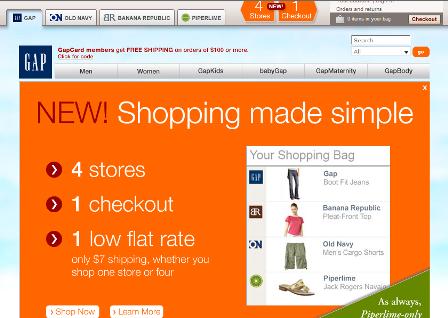
A lot of global companies own several brands which they use to segment either different market or customers. A great example is General Motors, which does not really exist as a customer brand but which developped several brands in order to respond to specific customer segments. This technique has another advantage: it sometimes provide the thought to customers they have choice between several brands whereas it is the same company behind this "competition".
Prior to the change, only 25% of Gap.com's downstream traffic went to company's other brands (OldNavy.com, BananaRepublic.com and Piperlime.com). That percentage increased to 55% by the end of Aug. 2008.
The same analysis also showed that Gap.com's referral traffic from OldNavy.com, its sister brand was only 12% with little or no traffic from the other brands prior to its redesign. The same traffic from OldNavy.com jumped to 26%. Piperlime.com and BananaRepublic.com also became major sources of referral traffic for Gap.com. In the meantime, Google.com as a Gap.com referral traffic source was down from 10.1% to 8.6% while its downstream traffic to Google.com was also down from 6% to 3%. Gap.com's reliance on Google decreased reduced substantially. This means customers no longer use a "vehicle" to get to the Gap's online store. In short, Gap's smart design not only increased its sales, it also eased the burden on marketing staff's acquisition and retention efforts because its number of visitors and the time those visitors spend have substantially increased since then.
What is also very interesting in this story is that it has also been copied by the online newspaper industry, and this similar tactic paid off too.
Wall Street Journal Digital Network is taking a similar approach. Before AllthingsD.com, one of the network's vertical sites, synchronized its site header with WSJ.com in August 2008, only 5% of its downstream traffic went to WSJ.com. A Before-after analysis showed that right after the site header synchronization, there was a dramatic increase in its downstream traffic to WSJ.com -- 35%. The interpretation of this success is that AllthingsD.com visitors are tempted to click on the WSJ.com.com tab on the top of its site -- just for the sake of wanting to see what's going on at WSJ.com. More often than not, the convenience factors and the "a-ha" moments that delight users are the reasons behind a successful site.
It seems that brand optimization is a key issue for global companies at the moment. I believe this detailed story could nourish your thoughts if you are managing a global brand. What do you think about it.